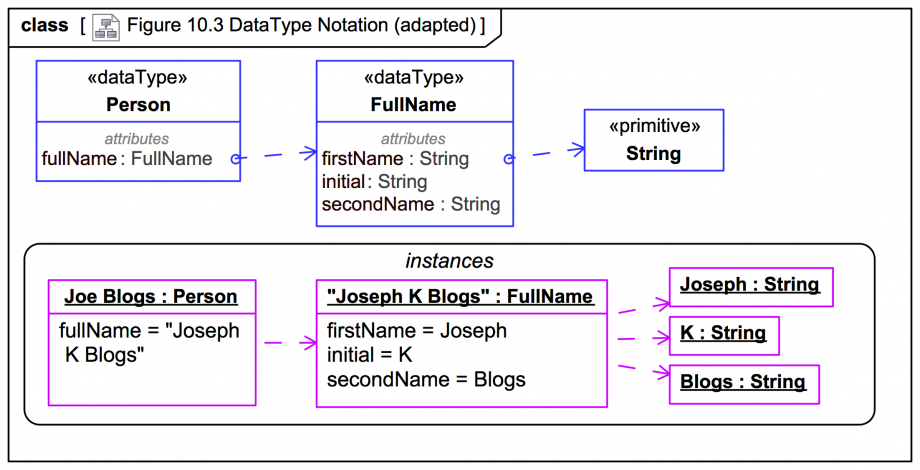Tags and keywords
The slide is adapted from UML-2.5.1 Figure 10.3 DataType Notation:
The Dependency relationships in this diagram are for illustration only
In general, a DataType may have substructure:
UML-2.5.1: 'If a DataType has attributes (i.e., Properties owned by it and in its namespace) it is called a structured DataType. Instances of a structured DataType contain attribute values matching its attributes. Instances of a structured DataType are considered to be equal if and only if the structure is the same and the values of the corresponding attributes are equal.'
But a PrimitiveType (a special kind of DataType in UML) does not have substructure:
On a subtle note:


